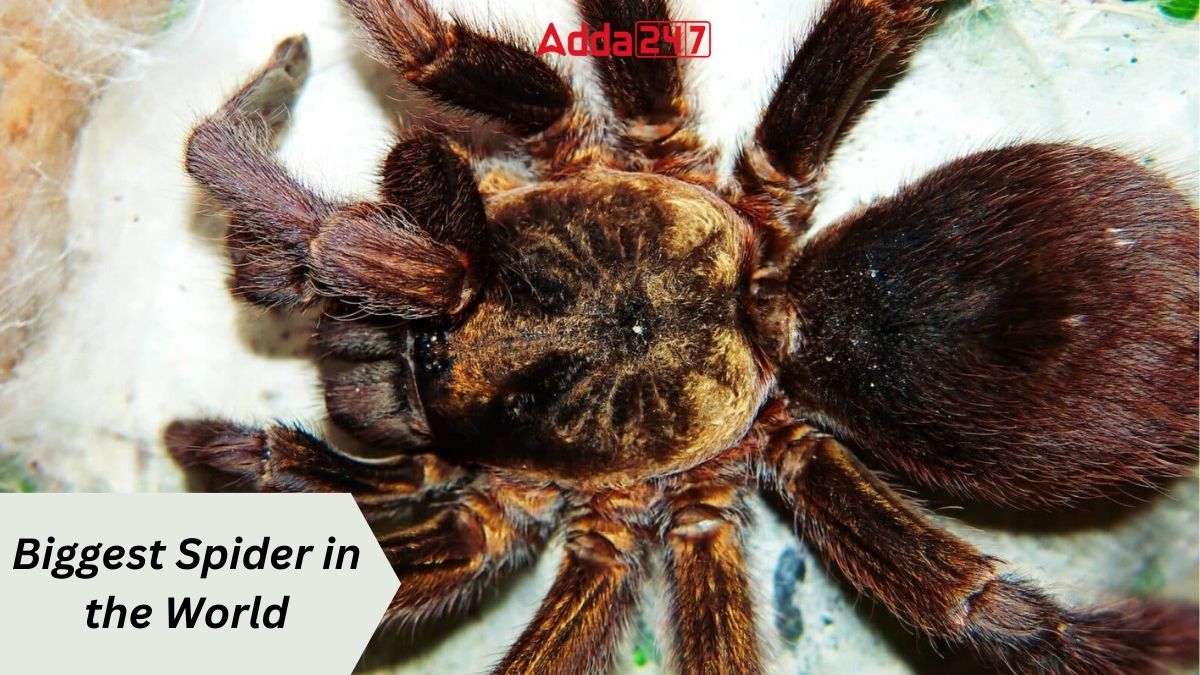Spiders are fascinating creatures that come in various shapes and sizes, with some species reaching impressive dimensions. While many people may be arachnophobic, there is no denying the incredible diversity and adaptations that spiders have developed over millions of years. In this article, we will explore the top 10 largest spiders in the world, showcasing the remarkable range of sizes these arachnids can attain.
Which is the Largest Spider in the World?
The world’s largest spider is the Goliath birdeater, scientifically called Theraphosa blondi. Recognized by National Geographic and Guinness World Records, this massive tarantula can grow up to 11 inches long and weigh nearly 6 ounces. Its body and leg span are so big that it can easily cover the size of a dinner plate. Found in the rainforests of South America, the Goliath birdeater is not only huge in size but also one of the most fascinating spiders on Earth.
The Goliath birdeater earned its intriguing name from an 18th-century engraving depicting a tarantula devouring a hummingbird, notes National Geographic. However, in reality, these spiders rarely feast on birds and predominantly dine on arthropods.
In contrast to most spiders, Goliath birdeaters don’t construct webs. Instead, they utilize silk to line their burrows beneath the forest floor, creating a cozy habitat, as shared by National Geographic.
While Goliath birdeaters are venomous, their venom poses no serious threat to humans. In the rare event of a bite, the experience is likened to a wasp sting, and medical attention is seldom required, according to National Geographic.
Top-10 Biggest Spiders in the World
Goliath Birdeater, with the leg span of up to 30 cm, holds the title of the biggest spider in the world, followed by Giant Huntsman Spider, Brazilian Salmon Pink Birdeater, and Brazilian Giant Tawny Red Tarantula.
Here is the list of top-10 biggest spiders in the world:
| Largest Spiders in the World | |||
| S. No. | Name | Scientific Name | Size |
| 1. | Goliath Birdeater | Theraphosa blondi | 175g, up to 30 cm leg span |
| 2. | Giant Huntsman Spider | Heteropoda maxima | 167g, 30cm leg span |
| 3. | Brazilian Salmon Pink Birdeater | Lasiodora parahybana | Females > 100g, up to 28cm |
| 4. | Brazilian Giant Tawny Red Tarantula | Grammostola anthracina | Leg span ~23cm |
| 5. | Chaco Golden-Knee Tarantula | Grammostola pulchripes | Leg span up to 20.3cm |
| 6. | King Baboon Spider | Pelinobius muticus | Leg span up to 20cm |
| 7. | Colombian Giant Tarantula | Megaphobema robustum | Leg span around 20cm |
| 8. | Face-sized Tarantula | Poecilotheria Rajaei | Leg span up to 20cm |
| 9. | Brazilian Wandering Spiders | Phoneutria sp. | Some up to 18cm in leg span |
| 10. | Sand-Dwelling Huntsman Spider | Cerbalus aravaensis | Leg span up to 14cm |
World’s Biggest Spider – Goliath Birdeater
Scientific Name: Theraphosa blondi
Weight: 175 g
Leg Span: up to 30 cm
The Goliath Birdeater, the world’s largest spider, reigns from the rainforests of northern South America. With a body mass reaching up to 175g and a length of 13cm, it claims the title for both body mass and length. The name stems from an 18th-century engraving depicting a tarantula devouring a hummingbird, leading to the entire Theraposa genus being labeled ‘bird eaters.’ Despite mainly feasting on worms and large insects, these spiders occasionally hunt and consume birds.
Second Largest Spider in the World – Giant Huntsman Spider
Scientific Name: Heteropoda maxima
Weight: 100 gm
Leg span: up to 30 cm
Native to Laos in Southeast Asia, the Giant Huntsman Spider stands out as the world’s second-largest spider. Boasting an impressive leg span of up to 30cm, surpassing even some Goliath Birdeaters, these spiders exhibit cannibalistic behavior. Larger females are known to consume males after mating, a common occurrence in the spider world that provides the female with a nutritional boost for enhanced reproduction.
Third Largest Spider in the World – Brazilian Salmon Pink Birdeater
Scientific Name: Lasiodora parahybana
Weight: 100 gm
Leg Span: 28 cm
Weighing as much as a banana, the Brazilian Salmon Pink Birdeater earns its spot as the world’s third-largest spider. Inhabiting the forests of Brazil, these spiders have gained popularity as pets globally due to their relatively docile nature. Despite their calm demeanor, they can deliver a painful bite or release irritating barbed hairs when threatened, showcasing their defensive capabilities.




 What was the Old Name of Bihar? Know Abo...
What was the Old Name of Bihar? Know Abo...
 Which River is known as the Diamond Rive...
Which River is known as the Diamond Rive...
 Which Dry Fruits are known as the King o...
Which Dry Fruits are known as the King o...







